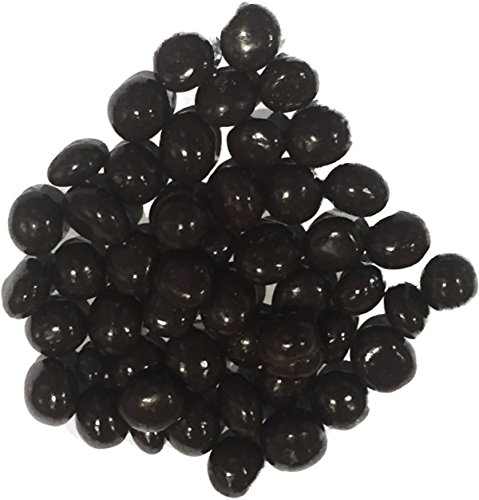14 Businesses Doing A Great Job At Types Of Coffee Beans
Pauline
0
4
01.19 14:01
 Types of amazon coffee beans Beans
Types of amazon coffee beans BeansBehind every cup of coffee beans wholesale suppliers that we drink there are beans that have been carefully graded. The beans are evaluated based on their size color, shape, and density.
The AA grade is given to coffee beans that satisfy all the criteria above, with the exception that they must not contain more than three deficient qualities (quakers). Most often, these are Kenya AA beans.
Arabica
Arabica coffee beans, also referred to as Coffea arabica are the most well-known type of coffee bean to cup coffee beans in the world. The legend says that coffee was discovered in Ethiopia when a goat herder observed his herd's dancing more vigorously after eating the fruits of the coffee plant. This led him to try roasting and making the seeds into the beverage we know and cherish today.
While a myriad of coffee plants exist but there are only two species that are used to create the basis for our favorite drinks: arabica and robusta. The flavor of the final drink is usually better when you drink the earlier.
There are many different arabica cultivars. Each one has its own distinct taste profile. Typica and Bourbon are two of the most well-known arabica cultivars. All other arabica cultivars were derived from these two varieties, either through natural mutations or through deliberate crossbreeding. The SL28 cultivar, for instance, was developed in Kenya by Scott Labs and is known for its distinctive chocolatey flavour.
The taste of an arabica variety depends on the environment in the conditions it was cultivated, and also the way it was handled and cooked. For instance, the kind of shade that a tree receives as well as its altitude and soil composition will all play a significant part in the final flavor.
Robusta
Robusta coffee beans (Coffea canephora) are the second most popular type of coffee beans. They are the beans used to make most instant coffees and have twice as much caffeine as Arabica Coffee Beans. They are also used in numerous espresso blends, specifically for cappuccino and caffe latte.
Coffea Canephora is an African plant that was first discovered in Sub-Saharan Africa. It has been cultivated across the world since. It can grow at lower altitudes and can withstand higher temperatures than the Arabica coffee plant, making it a much more practical crop for farmers. Vietnam is the world's biggest producer of robusta, followed by Brazil and Indonesia.
The robusta plant is a good coffee, but it's not the most popular among cupping enthusiasts due to its bitter taste and burnt-rubber notes. It's usually regarded as a poorer quality coffee, and the majority of large coffee companies use arabica beans for their premium products.
However, the demand for gourmet coffee is growing, barista Coffee beans and smaller roasters are experimenting with premium robusta varieties to make the most of its exceptional qualities. Our Valhalla Java and Death With Coffee are two exceptional robusta coffees, which are mixed with arabica to create the perfect blend of flavour and strength. These coffees are obtained from Uganda, where robusta has been cultivated for centuries. You can read more about them here.
Liberica
Liberica coffee beans are a rare variety that are seldom used in the world. They're less than percent of the world's total consumption of coffee beans, and are often overlooked as they do not contain the same amount of caffeine. These beans have a distinct flavor that a lot of coffee drinkers find appealing.
Liberica coffee beans, although extremely rare, are still quite popular in certain parts of Asia. They are particularly popular in Malaysia and Indonesia with large Muslim population. In these countries the coffee industry has been strong for many years. The consumption of a cup of coffee after prayers is a part of their tradition.
Liberica coffee's roots go back to the 1890s which was the time when a global epidemic caused by rust on the coffee leaf devastated the arabica crop. The event prompted the coffee industry to seek out a more resilient species that could thrive in tropical climates. They soon discovered the Liberica plant.
Liberica plants are resistant to pests and diseases, making them a perfect replacement for the devastated arabica crop. Liberica also has the ability to thrive in temperatures that are hot and lower altitudes, which enabled it to thrive in the climate of Southeast Asia. Liberica beans are the main ingredient in the production of the coffee that is produced in the Philippines and Indonesia.
Excelsa
Although it's not common for coffee lovers to find excelsa beans, they are quickly gaining the reputation of having a unique flavor. According to Komal Sable of South India expensive coffee beans Co. who is a fifth generation coffee farmer the beans have a teardrop-like shape, however they are smaller. However despite the family resemblance it's important to know that excelsa is technically not a separate species.
So, it's bit hazy as to how excelsa beans should be categorized and it's this confusion that's been the cause of the beans' lack of presence in the world of coffee. Because of this, many growers, roasters, and brewers aren't sure how to cultivate and use these beans in a proper manner.
Ultimately, it's up to the individual to decide whether they enjoy the flavor of excelsa Organic Coffee Beans and it might take a longer to find a blend that fits their preferences. The most important thing is to remain open to new ideas and give every kind of coffee a shot until you find one you truly enjoy. You'll discover the many possibilities these unique beans offer. It's a journey that's well worth the ride.

